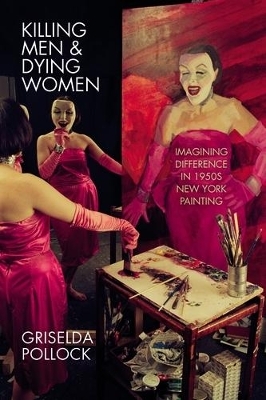
Killing Men & Dying Women
Imagining Difference in 1950s New York Painting
Seiten
2022
Manchester University Press (Verlag)
978-1-5261-6418-6 (ISBN)
Manchester University Press (Verlag)
978-1-5261-6418-6 (ISBN)
This book explores how theories of embodiment, the gesture, hysteria and subjectivity can deepen our understanding of New York abstract painting. Providing readings of paintings by Krasner and examining images of Pollock and Frankenthaler at work, it builds a bridge between the New York artist-women and their other, Marilyn Monroe. -- .
What did it mean for painter Lee Krasner to be an artist and a woman if, in the culture of 1950s New York, to be an artist was to be Jackson Pollock and to be a woman was to be Marilyn Monroe?
With this question, Griselda Pollock begins a transdisciplinary journey across the gendered aesthetics and the politics of difference in New York abstract, gestural painting. Revisiting recent exhibitions of Abstract Expressionism that either marginalised the artist-women in the movement or focused solely on the excluded women, as well as exhibitions of women in abstraction, Pollock reveals how theories of embodiment, the gesture, hysteria and subjectivity can deepen our understanding of this moment in the history of painting co-created by women and men. Providing close readings of key paintings by Lee Krasner and re-thinking her own historic examination of images of Jackson Pollock and Helen Frankenthaler at work, Pollock builds a cultural bridge between the New York artist-women and their other, Marilyn Monroe, a creative actor whose physically anguished but sexually appropriated star body is presented as pathos formula of life energy.
Monroe emerges as a haunting presence within this moment of New York modernism, eroding the policed boundaries between high and popular culture and explaining what we gain by re-thinking art with the richness of feminist thought. -- .
What did it mean for painter Lee Krasner to be an artist and a woman if, in the culture of 1950s New York, to be an artist was to be Jackson Pollock and to be a woman was to be Marilyn Monroe?
With this question, Griselda Pollock begins a transdisciplinary journey across the gendered aesthetics and the politics of difference in New York abstract, gestural painting. Revisiting recent exhibitions of Abstract Expressionism that either marginalised the artist-women in the movement or focused solely on the excluded women, as well as exhibitions of women in abstraction, Pollock reveals how theories of embodiment, the gesture, hysteria and subjectivity can deepen our understanding of this moment in the history of painting co-created by women and men. Providing close readings of key paintings by Lee Krasner and re-thinking her own historic examination of images of Jackson Pollock and Helen Frankenthaler at work, Pollock builds a cultural bridge between the New York artist-women and their other, Marilyn Monroe, a creative actor whose physically anguished but sexually appropriated star body is presented as pathos formula of life energy.
Monroe emerges as a haunting presence within this moment of New York modernism, eroding the policed boundaries between high and popular culture and explaining what we gain by re-thinking art with the richness of feminist thought. -- .
Griselda Pollock is Professor of Social and Critical Histories of Art at the University of Leeds -- .
Introduction
1 Prophecy, 1956
2 Five essays on sexuality (and art)
3 What did Greenberg not say, or dare to think?
4 Is the gesture male?
5 Is the artist hysterical?
6 Massacred women do not make me laugh, nor do the agonies of Marilyn Monroe’s body
7 Dancing space: Prophecy to Sun Woman I
8 Three memories: Rosenberg and Monroe
Appendix: Sexual difference
Index -- .
| Erscheinungsdatum | 03.08.2021 |
|---|---|
| Zusatzinfo | 58 colour illustrations |
| Verlagsort | Manchester |
| Sprache | englisch |
| Maße | 156 x 234 mm |
| Gewicht | 603 g |
| Themenwelt | Kunst / Musik / Theater ► Kunstgeschichte / Kunststile |
| ISBN-10 | 1-5261-6418-3 / 1526164183 |
| ISBN-13 | 978-1-5261-6418-6 / 9781526164186 |
| Zustand | Neuware |
| Informationen gemäß Produktsicherheitsverordnung (GPSR) | |
| Haben Sie eine Frage zum Produkt? |
Mehr entdecken
aus dem Bereich
aus dem Bereich


